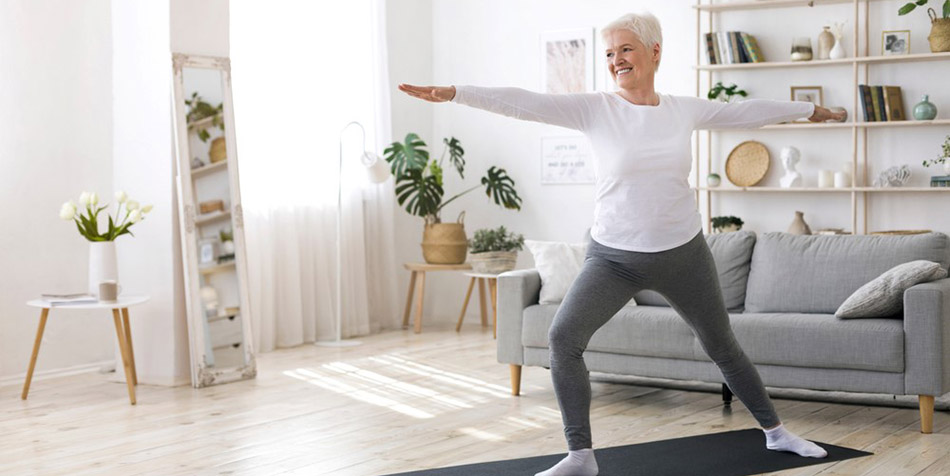
While you may not be able to fully prevent arthritis, you can take steps to prioritize joint health and alleviate arthritis pain.
Is arthritis preventable? It depends. While some wear and tear on your joints is an inevitable part of life, you can take steps to maintain joint health and help reduce the symptoms of arthritis as you age.
What is arthritis?
Arthritis is inflammation of the joints, which can cause pain, stiffness and difficulty moving. There are many types of arthritis, but the most common type is osteoarthritis, sometimes called "wear and tear" arthritis. With this type of arthritis, the cartilage that cushions your joints breaks down, causing bone to rub against bone. Osteoarthritis can also cause damage to other parts of the joint, including the tendons and ligaments, synovium (lining of the joint) and the bones themselves. According to the Centers for Disease Control and Prevention, more than 32.5 million adults in the U.S. have osteoarthritis, and it is a major cause of disability among older adults.
Risk factors for arthritis
Osteoarthritis can affect any joint, but the most frequently affected joints are the knees, hips, back and neck. It also affects small joints like those in the hands, toes and fingers. Your risk of developing osteoarthritis — and which joints it affects — depends on many different factors:
- Age: Osteoarthritis is more common in people over age 50, and risk for the condition increases as you grow older.
- Previous injury: If you've had a joint injury — such as an ACL or meniscus tear — you are more likely to develop osteoarthritis in that joint.
- Family history: If your parents or another family member developed arthritis, especially in the hands, you may also develop arthritis in that area.
- Repetitive use: If you have a hobby or occupation that involves repetitive motions or overusing certain muscles (think typing, knitting, lifting or gardening), that might increase your risk of developing arthritis in certain joints.
- Gender: Osteoarthritis is more common in women than in men, especially after menopause.
- Muscle strength: Strong muscles help support and protect joints by keeping them in alignment. If you have weak muscles, you may be at higher risk of developing osteoarthritis.
- Weight: The more weight your joints support, the more wear and tear they may experience. In addition, fat cells produce certain proteins called cytokines that can cause inflammation and hasten damage to cartilage.
- Blood sugar level: High levels of sugar in the blood — which can occur in people with diabetes and metabolic disorders — can increase inflammation in the body and may raise your risk of osteoarthritis.
How to reduce the symptoms of arthritis
While you may not be able to control all of the risk factors for osteoarthritis, there are steps you can take to reduce symptoms or prevent the condition from getting worse.
Maintain a healthy diet
A healthy diet can help give you the energy to stay active in a variety of ways. Certain foods, such as sugar and some fats, may increase inflammation in the body, which can make joints stiff and painful. An anti-inflammatory diet emphasizes fish and plant-based proteins, whole grains, and lots of fruits and vegetables. Eating this way can also help you maintain a healthy weight, which may reduce stress on the joints.
Stay active
Even though arthritis can make movement difficult, it's important to keep active and include physical activity in your daily routine. Regular physical activity, including walking, swimming, yoga and bicycling, can help keep your joints lubricated and reduce overall pain. It also has the extra benefits of boosting your mood, improving your level of function and supporting stress management. If you already have arthritis symptoms, start out slowly and add time and intensity as you gain strength and endurance. If symptoms get worse after activity, be sure to let your body rest.
Strengthen and stretch muscles
Doing exercises regularly to stretch and strengthen muscles can increase flexibility, improve balance and help reduce your risk of suffering future injuries. Several different muscles contribute to joint strength and stability. For example, your quadriceps, hamstrings and glutes all support your knees and hips. Your stomach muscles help support your back and hips. Try mini-squats and other exercises that gently stretch those muscles. Start with just a few, and increase repetitions as you get stronger.
Manage stress
Mental health and physical health are related. Chronic stress can increase inflammation and lead to a flare-up of joint pain. Learning to recognize, reduce and manage stress with meditation, exercise, or relaxing with friends and family can help.
When to seek medical care
If you experience joint pain, applying a cold pack to the affected joint may help reduce pain and inflammation. Acetaminophen and other non-steroidal inflammatory drugs can also help relieve occasional arthritis pain. Over-the-counter creams and ointments may offer some relief as well. However, if you find you're reaching for these regularly, it may be time to talk to your doctor. Treatment for osteoarthritis usually includes physical therapy to strengthen joints and improve or maintain function, and sometimes prescription drugs or injections to the joint to relieve pain. In certain cases, surgery may be warranted and can help reduce the pain.
Even if you can't completely prevent arthritis, you can take steps to prevent it from getting in the way of a full and active life.
$webqFacilityNumber
Need a Physician?